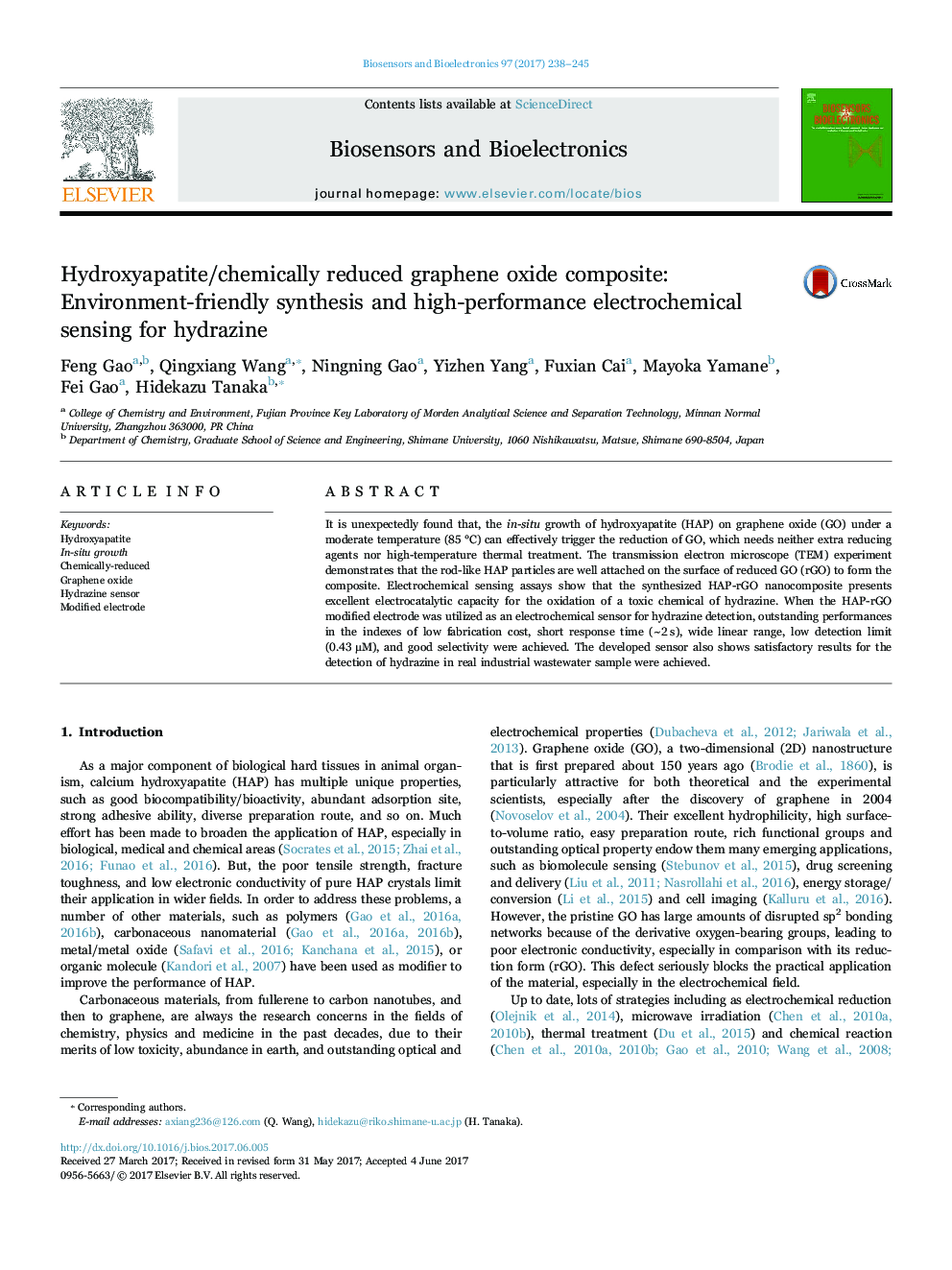| Article ID | Journal | Published Year | Pages | File Type |
|---|---|---|---|---|
| 5030987 | Biosensors and Bioelectronics | 2017 | 8 Pages |
Abstract
It is unexpectedly found that, the in-situ growth of hydroxyapatite (HAP) on graphene oxide (GO) under a moderate temperature (85 °C) can effectively trigger the reduction of GO, which needs neither extra reducing agents nor high-temperature thermal treatment. The transmission electron microscope (TEM) experiment demonstrates that the rod-like HAP particles are well attached on the surface of reduced GO (rGO) to form the composite. Electrochemical sensing assays show that the synthesized HAP-rGO nanocomposite presents excellent electrocatalytic capacity for the oxidation of a toxic chemical of hydrazine. When the HAP-rGO modified electrode was utilized as an electrochemical sensor for hydrazine detection, outstanding performances in the indexes of low fabrication cost, short response time (~2 s), wide linear range, low detection limit (0.43 μM), and good selectivity were achieved. The developed sensor also shows satisfactory results for the detection of hydrazine in real industrial wastewater sample were achieved.
Related Topics
Physical Sciences and Engineering
Chemistry
Analytical Chemistry
Authors
Feng Gao, Qingxiang Wang, Ningning Gao, Yizhen Yang, Fuxian Cai, Mayoka Yamane, Fei Gao, Hidekazu Tanaka,
